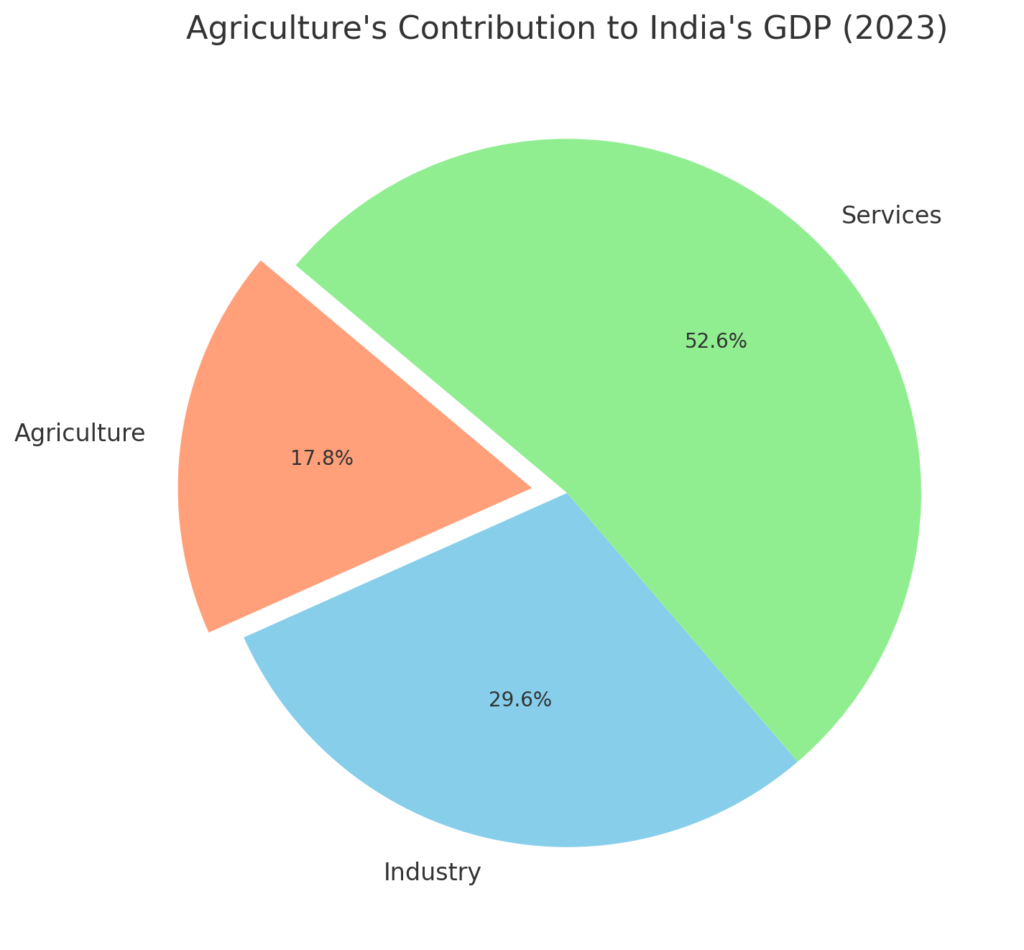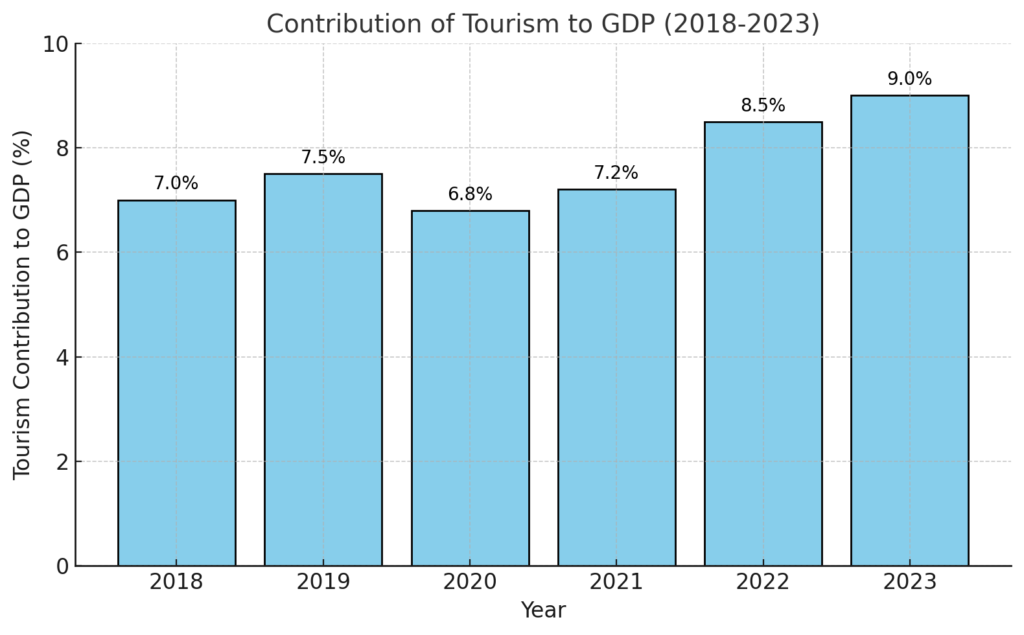Boosting GDP in 2025: India, the world’s fifth-largest economy, is actively working to secure its position as a global leader in the 21st-century economic scenario. Over the past few years, the country has experienced notable growth, driven by advancements in technology, industrial reforms, and business policies. However, to achieve a more robust GDP growth rate by 2025, India needs to move beyond its existing strategies and adopt a holistic, innovative, and futuristic approach.
Here are the 10 actionable strategies that can help propel India’s GDP growth while ensuring inclusive opportunities across all sectors.
Table of Contents
10 New Ways to Boost India’s GDP in 2025
1. Liberalization and Trade Reforms
Liberalization and international trade are the cornerstones of economic growth.
- Promoting Exports: The government should focus on making Indian goods competitive in the global market by offering tax exemptions, export subsidies, and incentive schemes. Increasing exports will bring in more foreign revenue, strengthening the economy.
- New Trade Partnerships: Establishing trade agreements with emerging and developed markets will give Indian businesses greater access to international buyers. For example, partnering with Africa and Latin America can open up new opportunities for Indian goods and services.
2. Investing in Technology and Innovation
A technology-driven economy can significantly boost productivity and efficiency.
- Digital Infrastructure: Investments in digital technologies like AI, blockchain, and cloud computing can enhance the functioning of critical sectors such as education, healthcare, and manufacturing.
- Startups and Innovation: Encouraging startups with better financial support and relaxed regulations can foster entrepreneurship. Startups not only create jobs but also bring innovative solutions to existing challenges, thereby strengthening the economy.
3. Agricultural Reforms
Agriculture remains a vital sector, employing nearly 50% of India’s workforce. Strengthening this sector is crucial for GDP growth.
- Infrastructure Development: Modernizing irrigation systems, improving road connectivity to villages, and building better warehouses will empower farmers.
- Value Addition: Establishing food processing units can ensure higher incomes for farmers. For instance, turning raw produce into packaged goods or processed food like juices and snacks can fetch better prices for farmers.

4. Labor Market and Job Creation
Employment generation is essential for sustainable economic growth.
- Skill Development Programs: Providing training in advanced technologies and industrial machinery can make workers more productive. Skilled workers can contribute more effectively to sectors like manufacturing and services.
- MSME Support: Small businesses, which form the backbone of the Indian economy, should be empowered with easy access to credit, market linkages, and simplified compliance norms. This will create jobs and spur economic activity.
5. Attracting Investments
Both foreign and domestic investments are vital for economic growth.
- Foreign Direct Investment (FDI): The government should implement investor-friendly policies such as tax concessions, easier land acquisition laws, and single-window clearance systems.
- Boosting Domestic Investments: Providing better financial products, low-interest loans, and incentives for businesses to reinvest profits will encourage domestic enterprises to expand.
6. Renewable Energy and Environmental Policies
As the world shifts towards sustainable practices, renewable energy offers India a golden opportunity to boost GDP.
- Investing in Solar and Wind Energy: Scaling up renewable energy infrastructure not only ensures energy security but also creates new industries and jobs.
- Pollution Control: Strict policies to reduce carbon emissions and promote eco-friendly practices will protect resources for future generations while boosting green businesses.
7. Space Exploration and Astronomy
India’s space sector, spearheaded by ISRO, has garnered global recognition. By 2025, further investment in space exploration can enhance India’s economic profile.
- High-Tech Jobs: The space industry creates high-value employment in sectors like engineering and data analysis.
- Global Market Access: Providing satellite services to other countries and commercializing space technology can become a significant revenue source.
Economic Benefits of Space Investments
| Sector | Impact |
|---|---|
| Employment | High-tech job creation |
| Communication | Improved satellite networks |
| Meteorology | Accurate weather predictions |
| Global Prestige | Increased foreign collaborations |
8. Structural Reforms and Legal Improvements
- Simplified Taxes: Continued reforms in GST and income tax policies will reduce compliance costs and attract investors.
- Judicial Reforms: Streamlining legal processes and reducing corruption will improve ease of doing business, fostering higher economic activity.
9. Education and Health Investments
A healthy and educated workforce is crucial for economic growth.
- Universal Education: Enhancing the quality of education, particularly in rural areas, will create a skilled workforce for tomorrow.
- Healthcare Infrastructure: Affordable healthcare will reduce absenteeism in the workforce and increase productivity.
10. Tourism and Heritage Promotion
India’s rich cultural and natural heritage is an untapped resource for economic growth.
- Developing Tourism Infrastructure: Building better connectivity to tourist destinations and improving facilities can attract more visitors.
- Global Campaigns: Promoting India as a global tourism hub through marketing campaigns will boost foreign exchange earnings.

India’s potential to achieve accelerated GDP growth by 2025 lies in a strategic blend of reforms across agriculture, technology, trade, and space exploration. By adopting these measures, the country can ensure inclusive growth, global competitiveness, and long-term prosperity. A focused and collaborative effort will position India as a leading global economic powerhouse in the years to come.
Also read:

